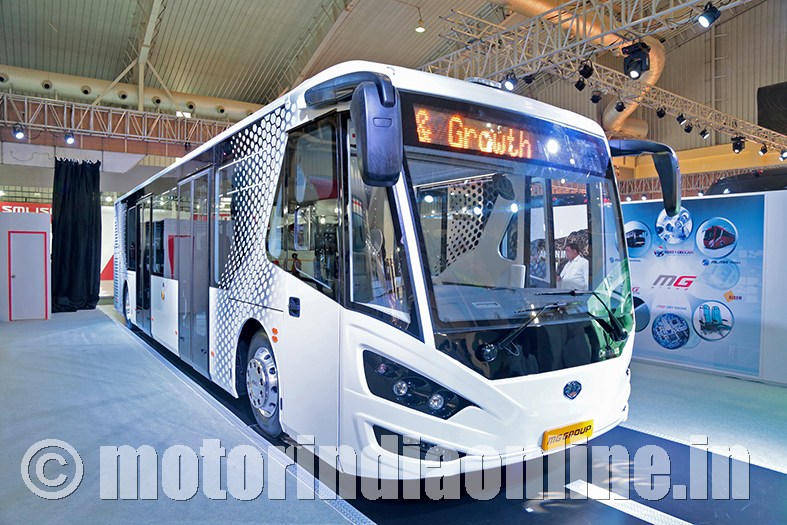This section discourses on how new technologies can radically improve buses in terms of rider experience, safety, and environmental sustainability in India. Technology can play a critical role in improving the attractiveness of bus transportation. In this regard, two major trajectories can be traced in the bus industry – improving the efficiency of conventional engines by reducing their emission levels and advancing passenger safety and comfort parameters.
Whether we like it or not, buses are seen as primitive and outmoded means of transportation, suffers deeply from an image of being ‘yesterday’s technology’. The precept of buses being ‘diesel-dirty’ in our city contributing to its polluted air has furthered this popular perception. This prejudiced representation exists among commuters, middle-class and urban folks in particular, whose travel aspirations and expectations are in-sync with the modern lifestyle, and are consistently changing. Their experiences from other alternatives and expensive transit modes, local or abroad, is setting standards for their ‘desirable’ means of commutation.
In reality, however, the bus transportation has come a long way in terms of adopting newer technologies and improving rider convenience. Buses today are nothing like what they were just two decades ago, may it be in terms of its engineering or passenger amenities and safety. A plethora of industry standardization is happening in the country, while State-mandated regulations are also driving bus towards more sophistication and efficiency.
The AIS-052 bus body code, for instance, is one such guideline. Effective since last October, the new code has fixed specifications on key parameters like dimension, body panels, seating layouts, windows, doors, emergency exists, luggage hold-areas, driver’s workspace, equipment, safety stickers, and so on. The code also extends to standardization of body building firms and build quality.
The ‘Bharat Stage’ emission norm is another drive factor. In a bid to clean up exhaust emissions, the diesel-run engines that powers the buses are undergoing massive engineering advancements. Engine manufacturers are developing various solutions to improve efficiency at various levels. Two broad areas are being explored – using energy that is currently wasted and plug all energy losses; and optimizing existing driveline components, axles and chassis, and vehicle for better fuel efficiency. On the whole, the future efforts of the industry will focus more on reducing overall fuel consumption and refining particulate matters in the emissions.
Further, driver comfort and vehicular safety are other areas where technological advancements are witnessed in the bus industry. Technologies like power-assisted steering, adjustable and air-suspended seats, and ventilation blowers are already normalized, while other advanced features like fully-automated transmission, AMT, rear-view cameras, driver-information systems, and cruise control are gradually penetrating in the industry to comfort drivers. Techs like disc brakes, LED headlamps and DRLs, ABS, EBD, and so on are being introduced for the buses to enhance safety in India. Making these techs affordable remains to be a fierce challenge for the industry.
Finally, connected technology and related informatics management has just began in bus transportation. Apart from telematics and electronic fleet management, the concept of Intelligent Transportation System (ITS) is fast catching up among STUs and private operators in the country. Digital payments is yet another dimension that might advance in future. This can phenomenally improve rider convenience and seamless integration of buses with other transit modes.
In a nutshell, to transform bus transportation as modern, reliable, cost-effective, and sustainable transport for the masses, all the stakeholders must investment on innovation. Innovation doesn’t necessarily mean new or super-advanced technologies only. It can even be simple solutions that weren’t thought of before. Innovation is a human-centered perspective and process, so placing bus passengers at the centre of our thinking can help!
